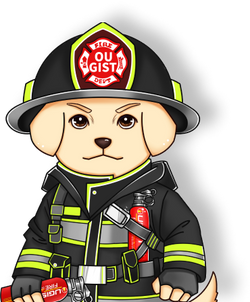Fire safety is a critical concern in every setting, from residential buildings to industrial facilities and public spaces. Fire extinguishers play a pivotal role in preventing the spread of fires and minimizing their potential damage. To ensure their effectiveness and reliability, fire extinguishers are subject to strict regulatory oversight. This blog delves into the entities responsible for regulating fire extinguishers and the importance of their role in maintaining public safety.

Regulatory Authorities:
Fire extinguishers are primarily regulated by government agencies and standards organizations that establish guidelines for their design, testing, labeling, and usage. In the United States, several key entities are involved in the regulation of fire extinguishers:
-
National Fire Protection Association (NFPA): The NFPA is a prominent standards organization that develops and publishes a wide range of fire safety codes and standards. NFPA 10, titled "Standard for Portable Fire Extinguishers," is a comprehensive document that provides guidelines for the selection, installation, inspection, maintenance, and testing of fire extinguishers. This standard serves as a critical reference for fire safety professionals and organizations.
-
Occupational Safety and Health Administration (OSHA): OSHA, a federal agency under the United States Department of Labor, oversees workplace safety and health. OSHA regulations include requirements for fire protection, which encompass the availability and proper maintenance of fire extinguishers in workplaces. OSHA standards emphasize the importance of training employees to use fire extinguishers effectively.
-
State and Local Fire Departments: State and local fire departments often adopt and enforce fire safety codes that incorporate guidelines from organizations like the NFPA. These departments play a crucial role in ensuring compliance with fire safety regulations within their jurisdictions. They may conduct inspections and require businesses and institutions to adhere to specific fire safety measures, including the appropriate placement and maintenance of fire extinguishers.
-
Underwriters Laboratories (UL): UL is a globally recognized independent safety science company that conducts testing and certification of various products, including fire extinguishers. UL certifications indicate that a fire extinguisher has undergone rigorous testing to verify its performance and safety.

Importance of Regulatory Oversight:
Regulatory oversight of fire extinguishers is vital for several reasons:
-
Safety: Fire extinguishers are designed to save lives and protect property during fires. Regulatory standards ensure that extinguishers are effective, reliable, and capable of combating various types of fires.
-
Consistency: Standards provide a consistent framework for the design, testing, and labeling of fire extinguishers. This consistency simplifies decision-making for consumers, businesses, and fire safety professionals.
-
Accountability: Regulatory oversight holds manufacturers and distributors accountable for producing and supplying safe and functional fire extinguishers. Non-compliance with regulations can result in penalties and legal consequences.
-
Training and Education: Regulations often include requirements for proper training in fire extinguisher use. This ensures that individuals are knowledgeable about how to use extinguishers effectively and safely, reducing the potential for injury or property damage.


